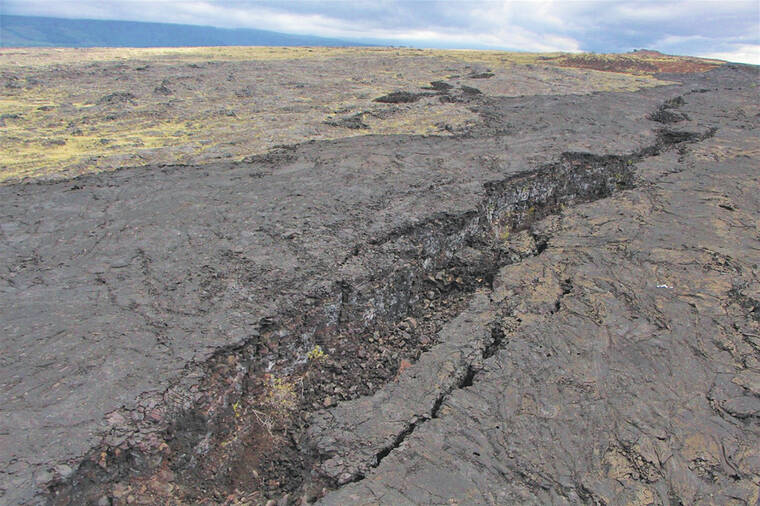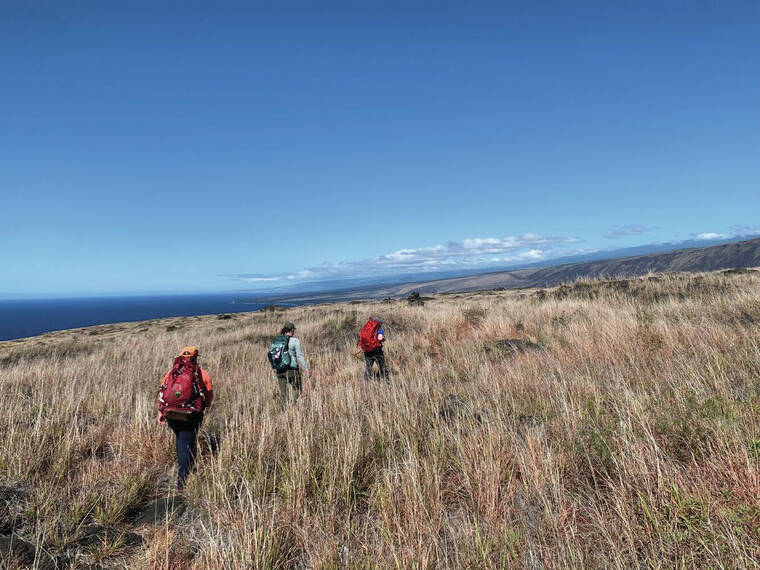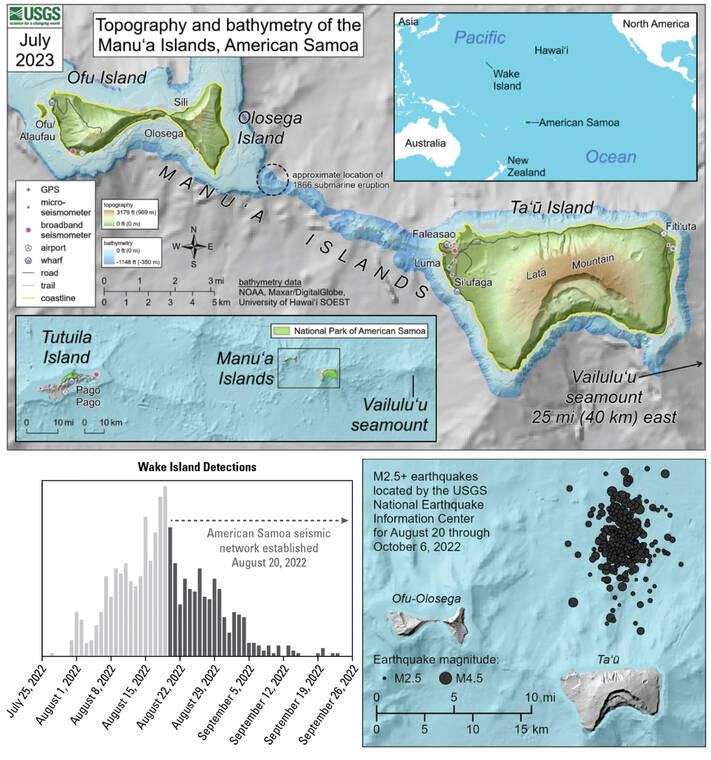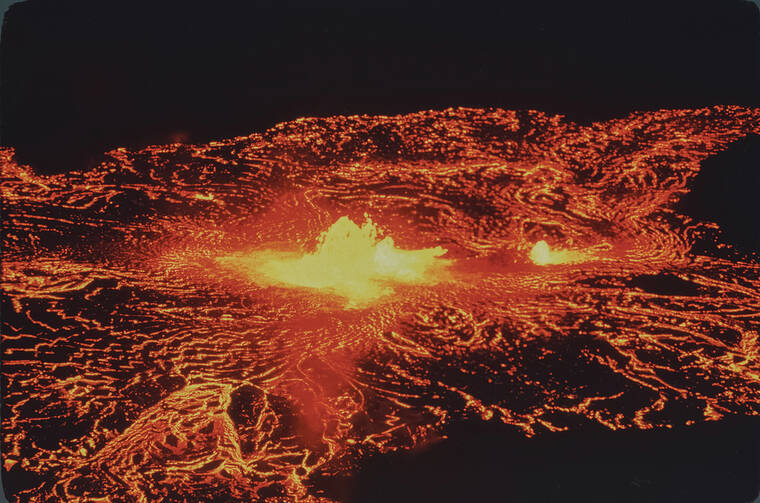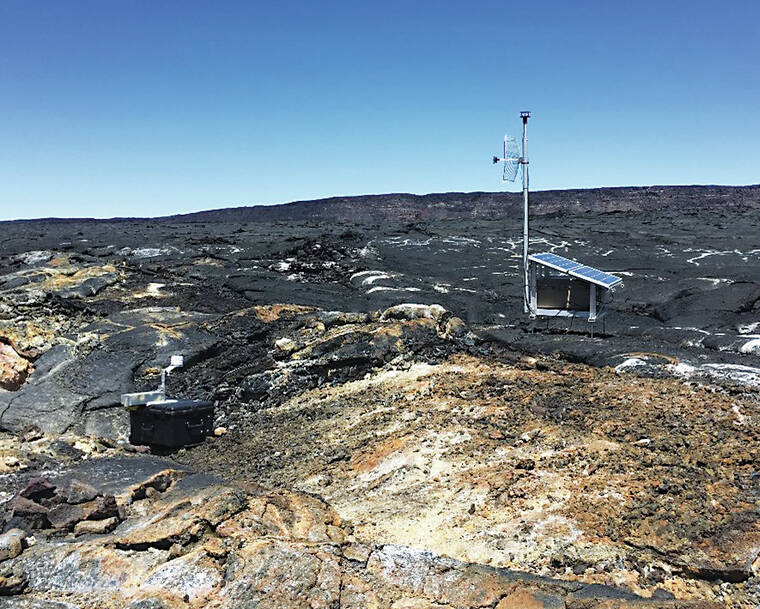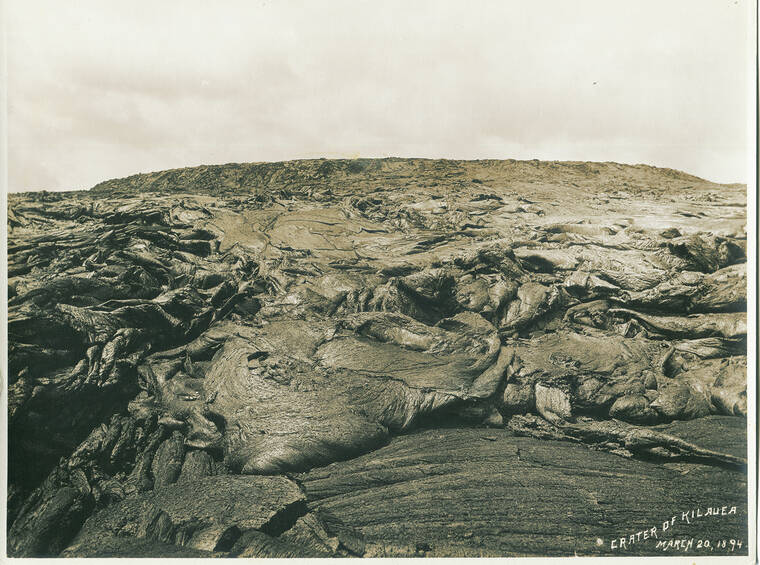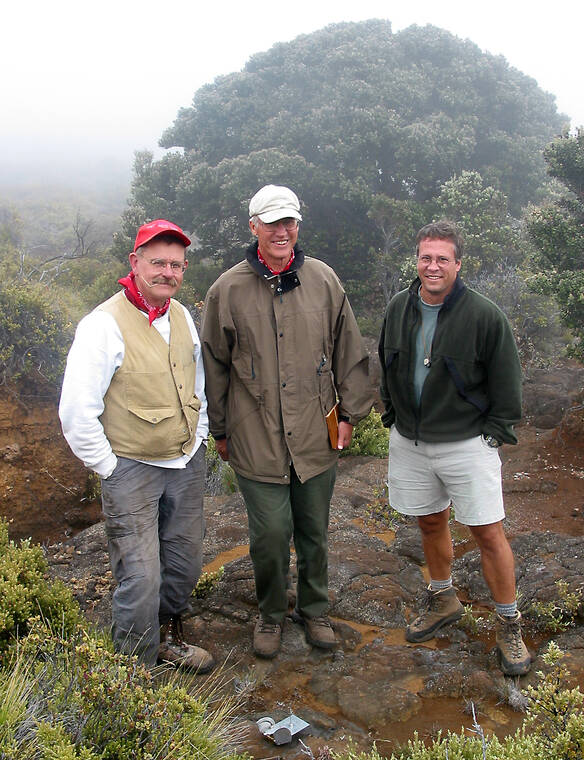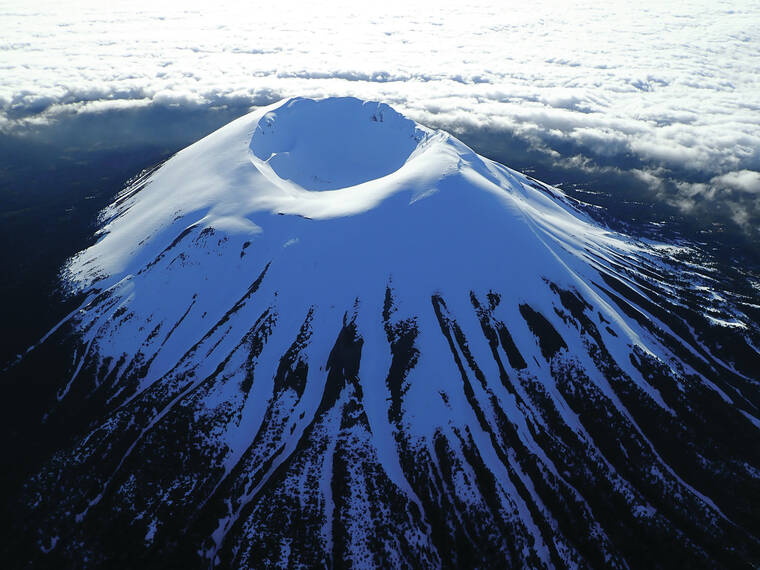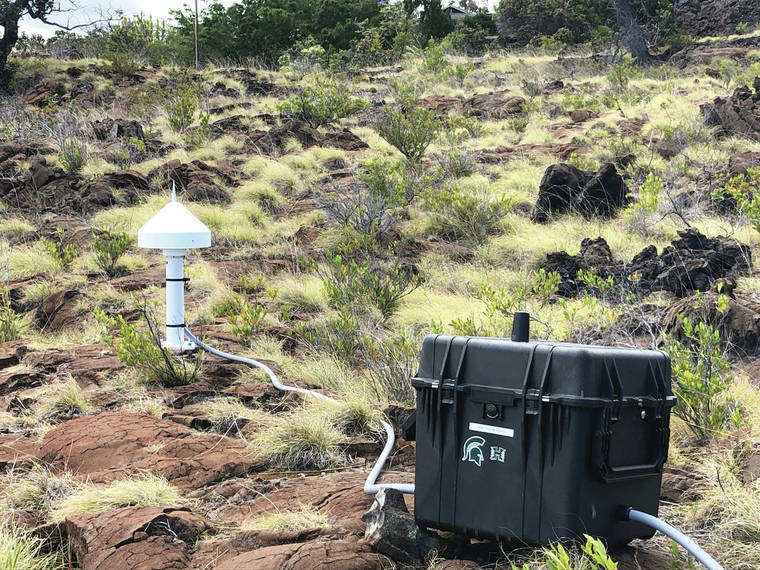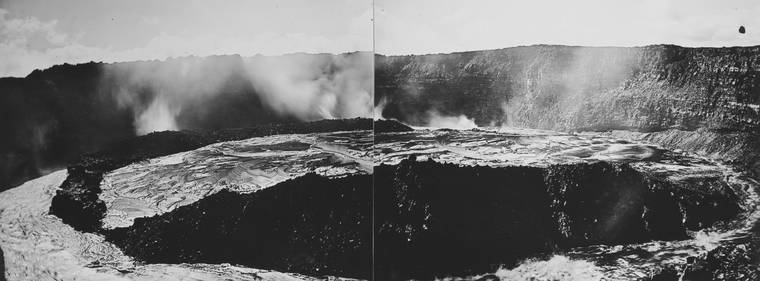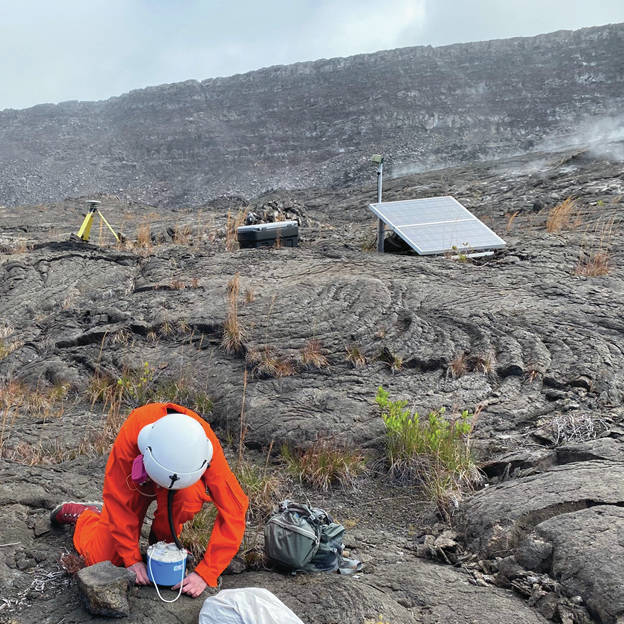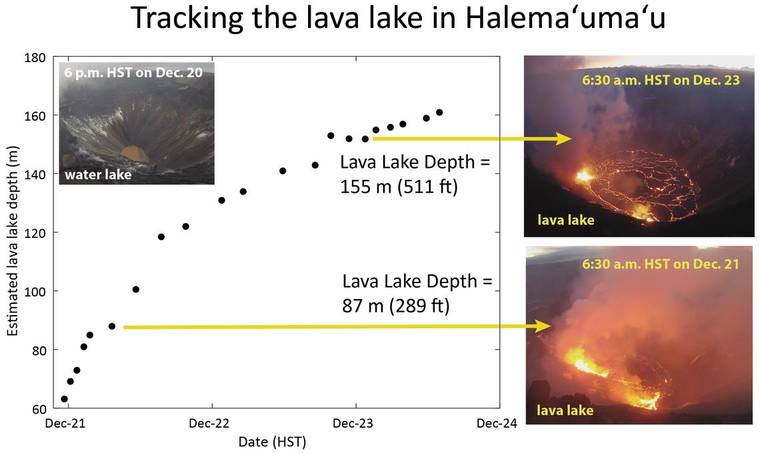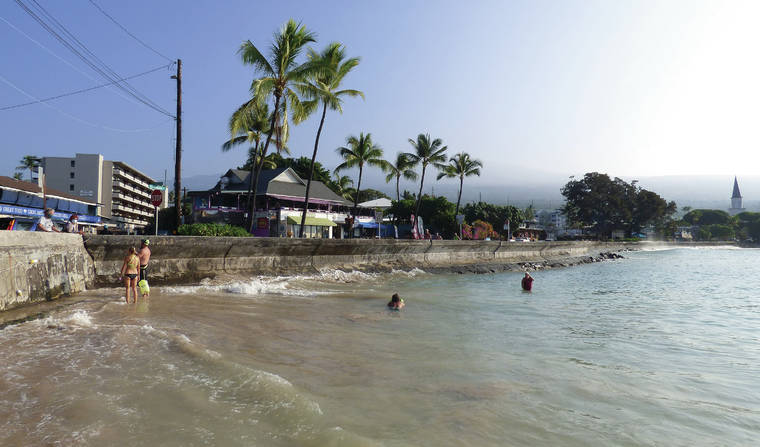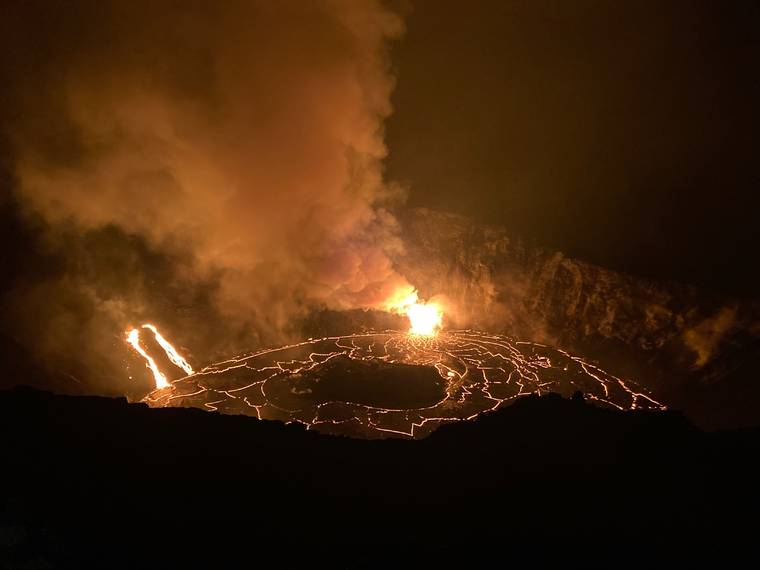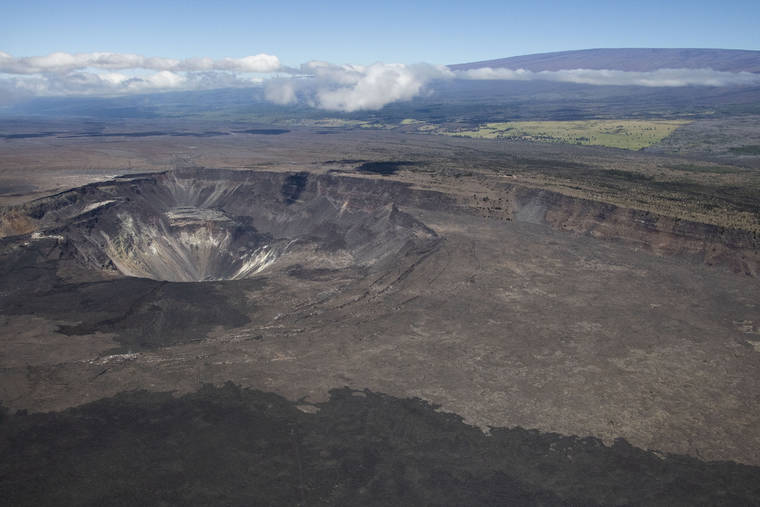Volcano Watch: The Great Hawaii ShakeOut and the earthquake energy budget
The Great Hawaii ShakeOut is a yearly event for kama‘aina and visitors to practice and prepare for when a large damaging earthquake hits the Hawaiian Islands. Every year, an earthquake drill happens on the third Thursday of October. This year, the ShakeOut is set for 10:19 a.m. on Oct. 19.
Volcano Watch: The most unusual Kilauea eruption…maybe 1823?
Last month a “Volcano Watch” article discussed the bicentennial of the first visit of westerners to Kilauea caldera, led by English missionary William Ellis, in 1823. Ellis did not just visit the summit region; he had approached from Ka‘u, traveling along what eventually became known as Kilauea’s Southwest Rift Zone (SWRZ). Ellis first witnessed evidence of Kilauea’s restlessness there, in the form of a vast, 4.8-square-mile (12.5 square-kilometer) lava flow that had erupted just a short time before.
Searching for tephra from one of Kīlauea’s largest explosive eruptions
Understanding the eruptive history of volcanoes in Hawaii requires a tremendous amount of time and effort examining deposits. Typically, older eruptions have less material exposed at the surface because younger eruptions bury them, or wind and rain erode them. Such is the case for one of Kilauea’s largest explosive eruptions, which is not exposed near its source at the summit and must be studied further afield.
Volcano Watch: USGS Hawaiian Volcano Observatory staff return to American Samoa
It’s been one year since Ta‘u volcano in American Samoa started shaking residents of the Manu‘a Islands (Ofu-Olosega and Ta‘u Islands). Fortunately, there have been no additional earthquakes since the volcanic unrest ended last October. This month, USGS staff will be returning to American Samoa to do outreach, strengthen relationships with partners, and maintain the monitoring network.
Volcano Watch: Halema‘uma‘u’s 1967-68 eruption: another crater-filler
Kilauea’s activity from 2018 until now has been compared to cycles of summit collapse and refilling prior to 1924. However, Kilauea also exhibited similar behavior during the 1967-68 Halema‘uma‘u eruption.
Volcano Watch: Tracking down Mauna Loa’s carbon dioxide
When lava poured out over the floor of Mokuaweoweo, Mauna Loa’s summit caldera, late on the night of November 27, 2022, it was still many hours away from infrastructure. Or most infrastructure.
Volcano Watch: What is the highest elevation reached by Halemaʻumaʻu lava?
The 2018 collapse of southern Kaluapele (Kilauea caldera) left a pit whose lowest point was about 500 m (1,640 ft) above sea level (asl). Since 2020, that pit has filled to a little over 900 m (2,950 ft) asl and one might wonder how high the lava level could go. We can’t answer that question but we can get an idea by looking to Kilauea’s past.
Unveiling Earth’s magnetic secrets: paleomagnetism and its geological applications
When we think about the Earth’s magnetic field, we often associate it with compasses and navigation. However, did you know that our planet’s magnetic field has a rich history of change, including switching of polarity, that spans millions of years?
Volcano Watch: Volcano monitoring from space: InSAR time series success in Alaska
In a recent “Volcano Watch” article, we learned about a remote sensing technique known as InSAR. This method of using satellite radar signals to detect changes to the surface of the Earth has been very beneficial for the monitoring of active volcanoes, especially in remote locations where it is difficult to install ground-based geophysical sensors. One such place where InSAR recently proved instrumental in detecting deformation of a volcano previously considered inactive was in Southeast Alaska.
Under the radar: Using weather stations to study Kilauea’s Dec. 20, 2020, plume
This week marks the second anniversary of the appearance of water in Kilauea’s Halema‘uma‘u crater, so it seems timely to discuss the water lake’s demise last Dec. 20, or rather, its transformation into a volcanic plume and how we use weather radar to investigate how that happened.
Stressed out: Hawaiian volcanoes are heavy
Many people living in the Hawaiian Islands are accustomed to feeling occasional earthquakes since the State of Hawaii is one of the most seismically active locations in the United States. Unlike some other earthquake-prone places in the U.S., for example California, where the earthquakes are related to tectonic plates sliding past each other, our earthquakes are related to volcanoes.
Volcano Watch: The lava lakes of Kilauea then and now
One of the most interesting aspects of the current activity in Halema‘uma‘u is the occasional oozing of lava around the edges of the entire crater while the lava surface is rising. Has that phenomenon been reported before in any accounts of previous Kilauea activity?
Using the ocean to track volcanic activity at Kilauea
Ocean swells occur continuously around the world. As these swells rise and fall, they couple with the ocean floor below them creating a constant signal. These signals, called oceanic microseisms, travel through the solid earth and are observed at the surface using instruments called seismometers.
Swarm of small quakes gently rattles Mauna Loa
Mauna Loa Volcano is not erupting, despite a swarm of small earthquakes detected Thursday, the US Geological Survey said.
Volcano Watch: A new tephra lab for HVO eruption monitoring
Tephra is any type and size of rock fragment that is forcibly ejected from a volcano and travels an airborne path during an eruption. Examples include ash, bombs, scoria, and shards of volcanic glass such as Pele’s hair and Pele’s tears).
Volcano Watch: A new eruption and a new era at Kilauea Volcano
‘Twas the Sunday before Christmas, the eve of the winter solstice, and festive holiday lights blinked of bright red and green. And then, shortly after 9:30 p.m. on Dec. 20, so did the Hawaiian Volcano Observatory’s (HVO’s) volcano alert level/aviation color codes for Kilauea!
Leilani Estates residents divided about road up fissure 8
No reprieve from vog in the forecast
A thick layer of vog continues to blanket West Hawaii areas for a third day following the start of an eruption Sunday night at Kilauea Volcano.
HVO: Kilauea lava lake rises to more than 500 feet
Areas around the summit of Kilauea on Wednesday were blanketed in high levels of sulfur dioxide and particulates that reached levels established by the Environmental Protection Agency as hazardous, according to a statement from Hawaii Volcanoes National Park.
Volcano Watch: Recent activity reminds us to maintain our volcano awareness
Though there hasn’t been an eruption in Hawaii in 2020, the year has hardly been quiet—earthquake swarms, an elevated alert-level on Mauna Loa, and a growing water lake on Kilauea are reminders that island residents should be aware of Hawaii’s active volcanoes.


